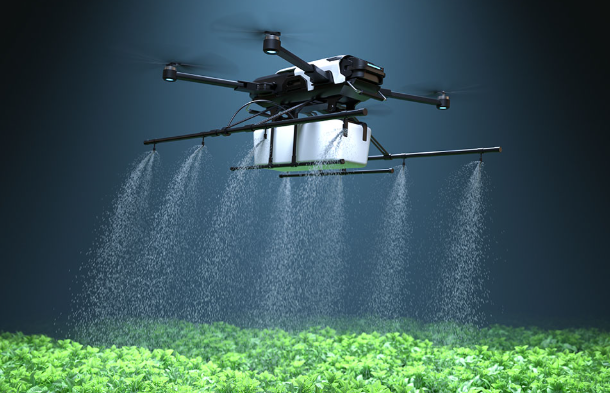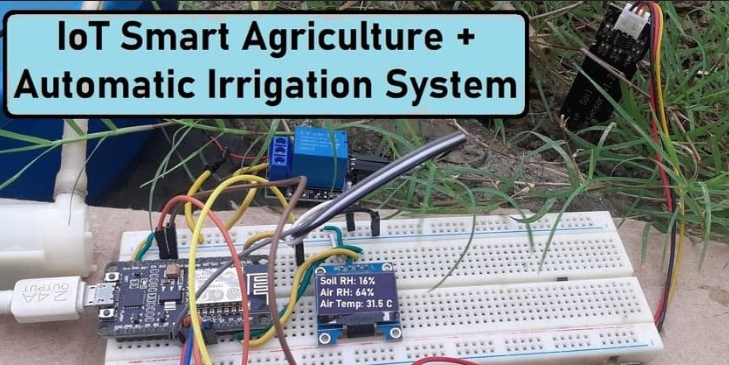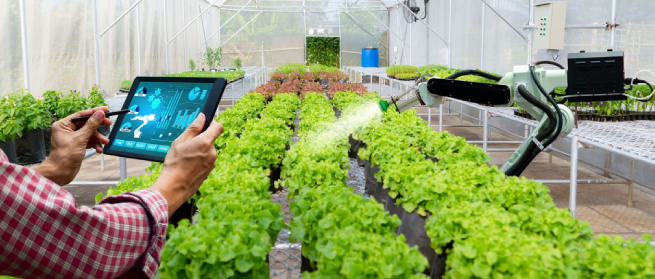In recent years, the agricultural sector has seen a technological revolution with the rise of smart agriculture technology. At the heart of this transformation lies the improvement in PCB (Printed Circuit Board) based system design, which plays a crucial role in creating efficient, reliable, and innovative solutions for modern farming. For those searching for insights on "Improvement PCB," "system design agriculture," "smart agriculture technology," "agriculture electronic PCBs," and "agriculture PCBs design," this blog offers a detailed guide on how PCB advancements are shaping the future of farming. We'll explore the role of PCBs in agriculture, the latest design improvements, and their impact on sustainability and productivity.
What Are PCBs and Why Do They Matter in Smart Agriculture?
PCBs are the backbone of electronic devices, providing a platform for connecting components like sensors, microcontrollers, and communication modules. In the context of smart agriculture technology, PCBs are essential for building systems that monitor soil conditions, automate irrigation, track weather patterns, and manage livestock. These boards ensure that data is collected, processed, and acted upon in real-time, making farming more precise and efficient.
The improvement in PCB design directly impacts the performance of agriculture electronic PCBs. Better designs mean smaller, more energy-efficient, and durable systems that can withstand harsh outdoor environments. For instance, a well-designed PCB can reduce power consumption by optimizing circuit layouts, which is critical for battery-powered devices used in remote fields. This focus on "agriculture PCBs design" ensures that farmers can rely on technology without frequent maintenance or replacements.

The Role of PCB Improvements in Smart Agriculture Technology
Smart agriculture technology aims to maximize crop yields while minimizing resource use, and PCBs are central to achieving this goal. Let's dive into how advancements in PCB system design for agriculture are making a difference:
1. Enhanced Sensor Integration for Precision Farming
Modern agriculture relies heavily on sensors to monitor variables like soil moisture, temperature, and nutrient levels. Improved PCB designs allow for seamless integration of multiple sensors into a single compact board. For example, a PCB can now support a soil moisture sensor with an accuracy of ±3% and a temperature sensor with a range of -40°C to 85°C, ensuring precise data collection. These advancements in "system design agriculture" help farmers make informed decisions about irrigation and fertilization, reducing waste and boosting yields.
2. Miniaturization for Portable and IoT Devices
One significant improvement in PCB technology is miniaturization. Smaller boards with high-density interconnects (HDI) allow for compact devices that are easy to deploy across large farms. This is especially important for Internet of Things (IoT) applications in smart agriculture, where devices need to communicate wirelessly over long distances. A typical PCB for an IoT agriculture device might measure just 50mm x 50mm, yet support 4G connectivity and GPS tracking, showcasing the power of "agriculture PCBs design."

3. Durability for Harsh Agricultural Environments
Farms are not gentle environments. Devices are exposed to dust, moisture, and extreme temperatures. Improvements in PCB materials and protective coatings, such as conformal coatings with IP65 ratings, ensure that agriculture electronic PCBs can withstand these conditions. For instance, a PCB designed with thermal vias can dissipate heat effectively, maintaining performance even at temperatures exceeding 70°C. This durability is a key focus of "Improvement PCB" efforts, ensuring long-term reliability in the field.
4. Energy Efficiency for Sustainable Solutions
Energy efficiency is a cornerstone of smart agriculture technology. Modern PCB designs optimize power usage by incorporating low-power components and sleep modes. For example, a PCB for a solar-powered irrigation controller might consume less than 1mA in standby mode, extending the lifespan of the system. This focus on energy-efficient "system design agriculture" aligns with the broader goal of sustainable farming practices.
Key Innovations in Agriculture PCBs Design
The field of PCB design is evolving rapidly, with several innovations directly benefiting smart agriculture technology. Here are some cutting-edge developments in "agriculture PCBs design" that are transforming the industry:
1. Multi-Layer PCBs for Complex Systems
Multi-layer PCBs, which stack multiple circuit layers into a single board, are increasingly used in agriculture. These boards can handle complex systems, such as those integrating sensors, processors, and wireless communication modules. A 6-layer PCB, for instance, might support a signal speed of up to 1GHz for real-time data transmission, ensuring that farmers receive instant updates on crop conditions. This is a prime example of "Improvement PCB" in action.
2. Flexible and Rigid-Flex PCBs for Unique Applications
Flexible and rigid-flex PCBs are gaining traction in agriculture for their ability to fit into irregular shapes or withstand vibrations. For example, a flexible PCB might be used in a wearable device for livestock monitoring, adapting to the animal's movements without breaking. These designs enhance the adaptability of "agriculture electronic PCBs" for diverse farming needs.

3. Advanced Thermal Management
Thermal management is critical for PCBs used in outdoor agriculture devices. Innovations like metal-core PCBs (MCPCBs) improve heat dissipation, preventing overheating in high-power systems. An MCPCB might maintain a thermal resistance of less than 1°C/W, ensuring stable operation under direct sunlight. This advancement in "system design agriculture" ensures that devices remain functional even in challenging conditions.
4. Integration of AI and Machine Learning
PCBs are now being designed to support AI and machine learning algorithms directly on the device, reducing reliance on cloud processing. For instance, a PCB with an embedded microcontroller unit (MCU) can analyze soil data locally and predict irrigation needs with 90% accuracy. This integration is a game-changer for "smart agriculture technology," enabling faster and smarter decision-making.
Benefits of Improved PCB Design for Agriculture
The advancements in PCB based system design offer numerous benefits for farmers and the agricultural industry as a whole. Here's how these improvements translate into real-world advantages:
- Increased Productivity: With precise data from well-designed PCBs, farmers can optimize planting schedules and resource use, potentially increasing crop yields by 20-30%.
- Cost Savings: Energy-efficient and durable PCBs reduce maintenance and replacement costs, saving farmers money in the long run.
- Environmental Sustainability: Smart systems powered by advanced PCBs minimize water and fertilizer waste, supporting eco-friendly farming practices.
- Scalability: Compact and modular PCB designs make it easier to scale smart agriculture solutions across small and large farms alike.
Challenges in PCB Design for Smart Agriculture and Solutions
While the improvements are impressive, designing PCBs for agriculture comes with unique challenges. Addressing these issues is essential for continued progress in "agriculture PCBs design."
1. Harsh Environmental Conditions
As mentioned earlier, farms expose electronics to tough conditions. Moisture can cause short circuits, while temperature swings can degrade components. Solutions include using weatherproof enclosures and selecting components with wide operating ranges, such as capacitors rated for -55°C to 105°C.
2. Power Supply Limitations
Many agricultural devices operate in remote areas without access to consistent power. Designers tackle this by integrating solar panels and energy-harvesting circuits into PCBs, ensuring continuous operation with minimal power draw, often below 5mW in idle mode.
3. Cost Constraints
Farmers often operate on tight budgets, so PCB designs must balance performance with affordability. Using cost-effective materials and simplifying layouts without sacrificing quality is a key focus of "Improvement PCB" strategies.
Future Trends in PCB Design for Smart Agriculture Technology
The future of PCB design for agriculture looks promising, with several trends poised to further enhance "smart agriculture technology." Here are a few developments to watch:
- 5G Connectivity: PCBs supporting 5G will enable faster data transmission, allowing real-time monitoring over vast areas with latency as low as 1ms.
- Biodegradable PCBs: Research into eco-friendly PCB materials could reduce electronic waste in agriculture, aligning with sustainability goals.
- Edge Computing: More powerful PCBs will process data locally, reducing dependency on internet connectivity and enhancing response times.
How to Choose the Right PCB for Agriculture Applications
For engineers and farmers looking to implement smart agriculture solutions, selecting the right PCB is critical. Consider these factors when focusing on "agriculture electronic PCBs":
- Environmental Resistance: Ensure the PCB can handle temperature extremes and moisture with appropriate coatings and materials.
- Power Efficiency: Opt for designs that support low-power modes to extend device lifespan in remote locations.
- Compatibility: Choose PCBs that support the specific sensors and communication protocols needed for your application, such as LoRa or Bluetooth.
- Scalability: Look for modular designs that allow for easy upgrades as technology evolves.
Conclusion
The improvement in PCB based system design for smart agriculture technology is revolutionizing the way we farm. From enhanced sensor integration to energy-efficient designs, advancements in "Improvement PCB," "system design agriculture," and "agriculture PCBs design" are empowering farmers to achieve higher productivity and sustainability. As technology continues to evolve, the role of agriculture electronic PCBs will only grow, paving the way for a smarter, more efficient agricultural future. By staying informed about these innovations, stakeholders in the farming industry can leverage the full potential of "smart agriculture technology" to meet the demands of a growing world.
 ALLPCB
ALLPCB







